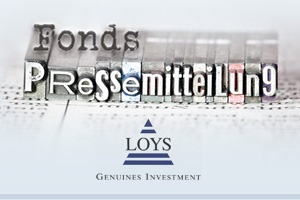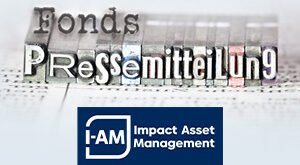 Pictet | Frankfurt, 05.03.2015. Sehr geehrte Damen und Herren, beigefügt erhalten Sie einen aktuellen Marktkommentar von Luca Paolini, Chefstratege bei Pictet Asset Management in London, zur aktuellen Asset Allocation. Wir freuen und über Ihr Interesse und senden beste Grüße Oliver MOELLER, Head of Communication Germany & Austria, Tel. +49 69 79 5009 30, omoeller@pictet.com
Pictet | Frankfurt, 05.03.2015. Sehr geehrte Damen und Herren, beigefügt erhalten Sie einen aktuellen Marktkommentar von Luca Paolini, Chefstratege bei Pictet Asset Management in London, zur aktuellen Asset Allocation. Wir freuen und über Ihr Interesse und senden beste Grüße Oliver MOELLER, Head of Communication Germany & Austria, Tel. +49 69 79 5009 30, omoeller@pictet.com
High Yield to benefit from ECB QE stimulus – Pictet Asset Management. Luca Paolini, chief strategist at Pictet Asset Management, explains recent allocation changes in response to the ECB’s QE starting; “As the ECB prepares to launch its quantitative easing programme, we have increased our exposure to European high-yield bonds to overweight. “The asset class looks appealing on a number of fronts. First, QE will boost the allure of instruments offering attractive single-digit yields. With as many as one in four euro zone government bonds offering negative yields and investment grade bonds yielding barely above 1 per cent, investors looking for income have little choice to but to move into lower-rated credit.
“Second, economic developments should underpin the credit credentials of issuers of European high-yield bonds. With the euro zone economy likely to grow by some 1.4 per cent, the revenue and earnings prospects of speculative-grade borrowers should remain solid. “Third, valuations are attractive: the yield pick-up currently offered by high-yield bonds is more than sufficient compensation against the risk of default. The market implied 12-month default rate is approximately 5.7 per cent – against the trailing 12-month rate of approximately 2 per cent. Encouragingly, flows into high-yield bonds have picked up in recent weeks.
“Our positioning in European government bonds reflects our belief that the euro zone policymakers are at last getting to grips with the problems facing the region. Although Greece’s exit from the euro zone is not our base case scenario, the region is better equipped to deal with this outcome than it was a few years ago. It has constructed a robust backstop facility while the ECB’s QE programme should offer additional support.
“Partly for these reasons, we recently closed underweight positions in French and Italian government bonds. It is interesting to note that the very long end of the government bond curve points to a widening of the yield spread between Italian and German sovereign debt. This is at odds with what we expect to emerge once QE begins. We are also overweight bonds issued by financial companies.
“We do continue to favour equities over bonds. Regionally, we prefer Europe and Japan over US stocks. There have been signs in recent weeks that economic momentum is improving in the euro zone, aided by easy monetary policy and a weaker EUR. Household spending is also on the rise as consumer confidence hits its highest since 2007. What is more, lending seems to be improving further, with banks more willing to finance and borrowers, both corporations and households, showing higher demand for credit.
“The ECB’s sovereign bond buying programme, due to start in March, will further ease financial conditions in money and bond markets. This improving backdrop creates the conditions for corporate earnings in the region to rise from a very low base. And euro zone equities tend to fare better than bonds in the six months following a sharp pick up in credit growth.”
Notes to the Editor
The Pictet Group
Founded in 1805 in Geneva, the Pictet Group is one of the premier independent asset and wealth management specialists in Europe, with GBP280 billion in assets under management and custody at 31st December 2014. The Pictet Group is owned and managed by seven partners with principles of ownership and succession that have remained unchanged since foundation. Based in Geneva, the Pictet Group employs more than 3,600 staff. The Group has offices in the following financial centres: Amsterdam, Barcelona, Basel, Brussels, Dubai, Florence, Frankfurt, Hong Kong, Lausanne, London, Luxembourg, Madrid, Milan, Munich, Montreal, Nassau, Paris, Rome, Singapore, Turin, Taipei, Tel Aviv, Osaka, Tokyo and Zurich. Pictet Asset Management (“PAM”) includes all the operating subsidiaries and divisions of the Pictet group that carry out institutional asset management and fund management such as Pictet Asset Management SA, a Swiss corporation registered with the Swiss Financial Market Supervisory Authority FINMA, Pictet Asset Management Limited, a UK company authorised and regulated by the Financial Conduct Authority, and Pictet Asset Management (Japan) Limited, a Japanese company regulated by the Financial Services Agency of Japan. At 31st December 2014, Pictet Asset Management managed GBP97.2 billion in assets, invested in equity and bond markets worldwide. PAM has seventeen business development centres worldwide, extending from London, Geneva, Frankfurt, Amsterdam, Luxembourg, Madrid, Milan, Paris and Zurich via Dubai, Hong Kong, Taipei, Osaka, Tokyo and Singapore to Montreal.
ABOUT THE PSU
The Pictet Asset Management Strategy Unit (PSU) is the investment group responsible for providing asset allocation guidance across stocks, bonds, cash and commodities.
Each month, the PSU sets a broad policy stance based on its analysis of:
• business cycle: proprietary leading indicators, inflation
• liquidity: monetary policy, credit/money variables
• valuation: equity risk premium, yield gap, multiples vs. history
• sentiment: Pictet sentiment index (investors’ surveys, tactical indicators


